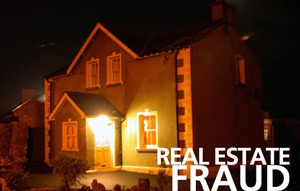By Howell Haunson
RISMEDIA, August 18, 2010–Mortgage fraud is not going away any time soon. The FBI has been working with bureaus of investigation in states that recently passed residential mortgage fraud acts to stay abreast of the latest fraud tactics.
The FBI has found that fraudsters are evolving new ways to take advantage of others and hide their intent. For this reason, anyone involved in the mortgage industry needs to be educated on the red flags of possible mortgage fraud, such as those outlined below:
Flipping vs. Serial Flipping:
A fraudulent flip is one that erroneously increases the value of the property by using an inflated appraised value. If a property was purchased for $175,000 and soon thereafter was sold for $500,000, most professionals would notice. However, serial flipping is trickier. Say a house sold for $175,000, soon after sold for $250,000, then $325,000, then $400,000 and then $500,000. Fewer professionals would even raise an eyebrow. This scheme takes more time, but the end result is the same: fraud.
Multiple Contracts & HUD-1 Settlement Statements
In this scheme, unbeknownst to the seller, the contract and settlement statement that is sent to lender shows inflated sales price. This enables the buyer to obtain a higher mortgage. In the end, the seller believes the property was sold for $300,000, but lender, agent and buyer believe the sales price was $500,000 (the amount on which the agent’s commission is calculated).
Fraudulent Qualification Documents
In this scenario, the borrower’s ability to qualify for a loan is misrepresented by fabricated employment history, income, credit records, and bank statement balances. FBI calls this is an “emerging issue” and a result of sophisticated Photoshop and editing software.
Bogus Assignment Fees
Buyer #1 enters into an assignable contract with the seller at an inflated price. Buyer #1 locates Buyer #2 who may be a co-conspirator or a naïve investor. Buyer #2 takes an assignment of the contract at the inflated price and agrees to pay Buyer #1 an assignment fee. Inflated appraisal is used and Buyer #2’s application may contain misrepresentations.
Continue reading Do You Know the Red Flags of Mortgage Fraud?

